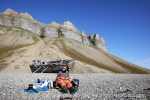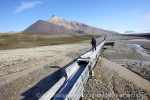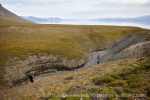-
current
recommendations- Liefdefjord
New page dedicated to one of Spitsbergen's most beautiful fjords. Background information and many photos.
- New Spitsbergen guidebook
The new edition of my Spitsbergen guidebook is out and available now!
- Liefdefjord
New page dedicated to one of Spitsbergen's most beautiful fjords. Background information and many photos.
Page Structure
-
Spitsbergen-News
- Select Month
- June 2025
- May 2025
- April 2025
- March 2025
- February 2025
- January 2025
- December 2024
- November 2024
- October 2024
- September 2024
- August 2024
- July 2024
- June 2024
- May 2024
- April 2024
- March 2024
- February 2024
- January 2024
- December 2023
- November 2023
- October 2023
- September 2023
- August 2023
- July 2023
- June 2023
- May 2023
- April 2023
- March 2023
- February 2023
- January 2023
- December 2022
- November 2022
- October 2022
- September 2022
- August 2022
- July 2022
- June 2022
- May 2022
- April 2022
- March 2022
- February 2022
- January 2022
- December 2021
- November 2021
- October 2021
- September 2021
- August 2021
- July 2021
- June 2021
- May 2021
- April 2021
- March 2021
- February 2021
- January 2021
- December 2020
- November 2020
- October 2020
- September 2020
- August 2020
- July 2020
- June 2020
- May 2020
- April 2020
- March 2020
- February 2020
- January 2020
- December 2019
- November 2019
- October 2019
- September 2019
- August 2019
- July 2019
- June 2019
- May 2019
- April 2019
- March 2019
- February 2019
- January 2019
- December 2018
- November 2018
- October 2018
- September 2018
- August 2018
- July 2018
- June 2018
- May 2018
- April 2018
- March 2018
- February 2018
- January 2018
- December 2017
- November 2017
- October 2017
- September 2017
- August 2017
- July 2017
- June 2017
- May 2017
- April 2017
- March 2017
- February 2017
- January 2017
- December 2016
- November 2016
- October 2016
- September 2016
- August 2016
- July 2016
- June 2016
- May 2016
- April 2016
- March 2016
- February 2016
- January 2016
- December 2015
- November 2015
- October 2015
- September 2015
- August 2015
- July 2015
- June 2015
- May 2015
- April 2015
- March 2015
- February 2015
- January 2015
- December 2014
- November 2014
- October 2014
- September 2014
- August 2014
- July 2014
- June 2014
- May 2014
- April 2014
- March 2014
- February 2014
- January 2014
- December 2013
- November 2013
- October 2013
- September 2013
- August 2013
- July 2013
- June 2013
- May 2013
- April 2013
- March 2013
- February 2013
- January 2013
- December 2012
- November 2012
- October 2012
- September 2012
- August 2012
- July 2012
- June 2012
- May 2012
- April 2012
- March 2012
- February 2012
- January 2012
- December 2011
- November 2011
- October 2011
- September 2011
- August 2011
- May 2011
- April 2011
- March 2011
- February 2011
- January 2011
- December 2010
- November 2010
- September 2010
- August 2010
- July 2010
- June 2010
- May 2010
- April 2010
- March 2010
- February 2010
- November 2009
- October 2009
- August 2009
- July 2009
- June 2009
- May 2009
- April 2009
- March 2009
- February 2009
- January 2009
- December 2008
- November 2008
- October 2008
- August 2008
- July 2008
- June 2008
- May 2008
- April 2008
- March 2008
- February 2008
- April 2000
- Select Month
-
weather information
-
Newsletter

| Guidebook: Spitsbergen-Svalbard |
Home
→ September, 2020
Monthly Archives: September 2020 − News & Stories
Walk in the forest near Pyramiden
Tue
22 Sep
2020
Back to Spitsbergen’s beautiful aspects, which seem even remoter this year. It took several attempts to get to Pyramiden this time. In Spitsbergen, everything – well, almost – depends on the weather. The trip to Pyramiden by boat is more than 50 kilometres, and our boat wasn’t exactly Antigua or anything bigger. So, the weather should be ok. But we got our chance and arrived in Billefjord after a lunch break in Skansbukta.
Pyramiden
In Pyramiden, we could rely on a friendly welcome at Hotel Tulipan. A lot has happened there in recent years, the standard is improved – the bar is lovely and the food is good. The old, Soviet-style rooms are not available anymore, to my personal regret, but I guess that’s the walk of time. Some life has also returned to the Culture House. And they keep working here and there.

Things are happening in Pyramiden. Here, the old canteen is being renovated.
The devonian forest in Munindalen
But we wanted a walk in the forest. Well, in the Pyramiden area, you can not walk in a forest, but you can actually walk to a forest. In Munindalen, to be more accurate. This forest grew in the Devonian, more than 350 million years ago, probably in a river plain. Then, the trees were buried by sand and mud during a flood … and they became fossilised. Just as they were, in a vertical position, or “in situ”, as geologists say. One of the oldest forests in the world.

Imprint of a fossilised tree in Devonian rocks, Munindalen.
There were no trees before the Devonian. (And if you happen to find similar fossils in Pyramiden itself: they date to the Carboniferous, just as the coal, so they are a good bit younger than the Devonian trees in Munindalen). So it is worth getting wet and very cold feet as you have to step into the icy meltwater river because the outcrop is a little rockwall right next to it (or just bring your rubber boots, which we forgot …).

Even the reindeer were bigger than elsewhere in Pyramiden back then 😉
Seriously: they had horses.
Then, the fog came and settled in for several days, cutting Spitsbergen physicall off from the outside world (planes don’t land in Longyearbyen in dense fog). I spent most of the time on the return trip to Longyearbyen holding on to the GPS 🙂
If you would like to take a virtual trip to Pyramiden while it is hard to get there in real life – check the Pyramiden panorama pages, there is plenty of stuff there!
Gallery: Pyramiden and Munindalen
Some impressions from the trip from Longyearbyen via Skansbukta to Pyramiden and Munindalen.
- gallery anchor link: #gallery_1860
Click on thumbnail to open an enlarged version of the specific photo.
Longyearbyen is shrinking. And: the bank does not always win
Longyearbyen is changing during the corona crisis. The population is shrinking: 273 people have left since early March, according to official statistics. In addition comes an unknown number of people who have never registered or who did not give notice of their departure.
Many people lost their jobs when the corona crisis hit hard in spring and summer, and many can’t afford Longyearbyen’s high living expenses anymore and moved back to their countries of origin. The Spitsbergen treaty grants citizens from many countries free access, but the drawback is that Norway does not supply Svalbard’s non-Norwegian inhabitants with any social security regardless how long they have lived there. There was a one-time financial aid by the government in spring because of the corona situation, which also made it difficult for many to move away, but it was made clear that this programme would not be extended.
To many people’s surprise, the bank is also amongst the losers: the mother company, SpareBank Nordnorge, has decided to close 16 branch banks in north Norway. The company says that the reason is a changed customer behaviour as customers use the internet and do not go to the bank anymore, as Svalbardposten found out. It does not surprise that the decision is met with strong criticism in Longyearbyen.

Post office and bank in Longyearbyen: the post stays, the Bank will close.
At least the post office will stay: will most post offices in Norway will be closed, the one in Longyearbyen is amongst the lucky few who will stay. In many places in Norway, postal services will only be available in shops and supermarkets in the future.
Polar bear dead in connection with scientific anaesthetisation
The series of sad news from Spitsbergen does not stop. On Wednesday, a polar bear died in connection with anaesthetisation for scientific purposes, according to the Sysselmannen.
The incidend happened in Wijdefjord during the routine autumn campaign to mark polar bears. In this process, bears are anaesthetised with tranquiliser guns from a helicopter to mark the animal and for other scientific purposes, usually including weighing and taking samples. The bear that died on Wednesday was bear number “30 or 31” of the current campaign.
So far it is only known that the bear did not survive. It is not yet known in public when in the process and how and why exactly he died. The Sysselmannnen opened a case to investigate the incident, so no further details have been released at the time of writing, for example concerning the question if a vet was present or not.
The routine to regularly anaesthetise a larger number of polar bears, involving a helicopter chase, has met criticism already before. According to Jon Aars, leading polar bear scientist of the Norwegian Polar Institute, it is common to “lose” 2 to 4 bears in 1000 anaesthetisations. This was the third time since 2003 that it happened to Aars, as he told Svalbardposten. According to Aars, marking bears is justified by the worth of the data thus obtained for scientists.

Meetings of humans and polar bears have already cost the lives of 4 bears and one person in Spitsbergen this year.
(The photo is symbolic: harmless find of an old polar bear skull in Hinlopen Strait).
It is already the fourth incident this year where a polar bear died during or after contact with people. There was, of course, the recent fatal attack of a bear on a man at the campsite near Longyearbyen, where a man and a polar bear died. A bear was shot by the police in early January although there was no immediate danger. And in late January, an anaesthetised bear died during helicopter transport away from Longyearbyen. It seems that the latter case has not been handled well and the incident attracted substantial criticism and raised a number of questions, for example if a vet should be present during such operations. It has not yet been revealed if a vet was present when the bear died in Wijdefjord on Wednesday.
Blog: trip to Svenskehuset at Kapp Thordsen
Mon
7 Sep
2020
After all the bad and even terrible news of the last couple of weeks, regarding a potentially deadly virus that keeps making everybodies lives difficult and a very deadly polar bear attack, it is easy to forget that Spitsbergen is still a beautiful place. It is time for a few photos to bring that back to mind.
It is a couple of weeks ago now, but that doesn’t matter. Isfjord was flat as a mirror, so we took the opportunity for a Zodiac tour from Longyearbyen to Svenskehuset at Kapp Thordsen.
Gallery: Svenskehuset
- gallery anchor link: #gallery_1850
Click on thumbnail to open an enlarged version of the specific photo.
I am not going to repeat the dramatic history of the “Swedish house” (Svenskehuset) at Kapp Thordsen here, as I have recently compiled a special side dedicated to Svenskehuset – including panorama images, as you may already have guessed. Have a look there if you are interested. I do recommend it. Finally getting these images was a strong motivation to take this trip.
And other than that, spending a long day in fine weather in a place like this, with fine views over Isfjord and all the big and small impressions of the scenery and the tundra, is an experience of the kind of which you (or, at least, I) just can’t get enough in life.
Regarding the small impressionf of the tundra: I have always experienced it as slightly disappointing to photograph the flowers. Because of the limited depth of field with macro photography, only a small part of the flower appears in focus. But today, photo technolocy enables us to take it a good step further. “Focus stacking” is the key. It requires some effort regarding preparations, equipment, photography and editing, but I think it is worth it in the end:

Arctic bell-heather near Svenskehuset.
Fokus-stacking makes it possible to have almost the whole flower in focus.
Phippsøya polar bear (MS Bremen, 2018): proceedings closed
The legal case of the polar bear that was shot in 2018 by crew members of the German cruise ship MS Bremen is closed, as the Sysselmannen informed in a press release on Friday.

Polar bear on Phippsøya, feeding on a carcass.
It was most likely this bear that was shot
by crew members of MS Bremen in this place 11 days later.
The incidend happened on 28 July 2018, when 14 crew members of MS Bremen went ashore on Phippsøya, which belong to the islands of Sjuøyane, to prepare a landing for passengers. The group included the expedition leader, four polar bear guards, a photographer and other crew members. Two polar bears guards were soon sent out to check a part of the terrain that could not be seen from the landing area. They met the polar bear which had been hidden in a terrain depression. The bear attacked one person, who suffered head injuries. The bear did not stop the attack in spite of several warning shots being fired, so two persons fired in total three shots against the bear which killed him. The person who was attacked survived with minor injuries.
The photographer took photos of the event, which hence was well documented and easy to reconstruct.
Now the public prosecutor of Troms and Finnmark (north Norway) has decided to close the case. Shooting a polar bear is principally illegal and under punishment, but this was now officially found to be a case of self defence.
The case that had been opened against the company was also closed. Here, the companies safety routines had been investigated.
The investigations were finished in November 2019, but competence between different authorities was initially unclear and then the Corona crisis led to further delays.
Cruises in Spitsbergen now only with 30 persons in total
The Norwegian government has put more restriction on cruises in Spitsbergen: they are now only allowed for ships carrying 30 persons in total – that is, passengers and crew together. Day trips without overnight stays on board are not concerned by this restriction.
The government says that the difficulties a Covid-19 outbreak would bring on any larger ship would be difficult to control, hence the new restriction.

The Le Boreal (here seen in Liefdefjord in 2015) was one of only a few ships at all that have been able to do cruises this summer in Spitsbergen.
In June, the government opened the possibility to do cruises in Spitsbergen. But already then, restrictions such as a reduction of passenger numbers by 50 % kept many tour operators and ship owners from starting the season in Spitsbergen at all. After a Covid-19-outbreak on MS Roald Amundsen, also Hurtigruten stopped their expedition cruises completely. Beyond Hurtigruten and Ponant (Le Boreal), only a very few smaller ships were active with cruises over several days this year in Spitsbergen, such as Origo, who managed to do a handful of trips, and Cape Race, who just finished one successfully, only to cancel the rest of the season because of the recent introduction of quarantine for travellers from Germany. Cape Race will now try her luck in Scotland – fingers crossed!
The government has announced to re-consider this most recent restriction until 01 November. I would say: no rush. Then the season is over anyway, if it has ever happened in the ongoing Corona-year at all.
Wreck of Northguider removed
The wreck of the Northguider is now completely removed from Hinlopen Strait.
The shrimp trawler ran ground in Hinlopen, very close to the coast of Nordaustland, in late December 2018. The crew could be rescued by helicopter in a dramatic operation in very cold and stormy conditions and complete darkness. Later, environmentally dangerous materials including fuels and lubrication oils, paints, electrical equipment and fishing gear could be removed.

The wreck of the ship trawler Northguider and salvage vessels
in August 2019 in Hinlopen.
It was planned to remove the wreck during the summer of 2019, but difficult ice conditions delayed the operation and then it turned out that the wreck could not be removed in one piece because it was too heavily damaged.
Now the Northguider has been cut into several smaller pieces which could be taken to Norway. Divers confirmed that no wreckage is left on the sea flour either, according to the Sysselmannen.
News-Listing live generated at 2025/June/15 at 07:18:06 Uhr (GMT+1)




















































